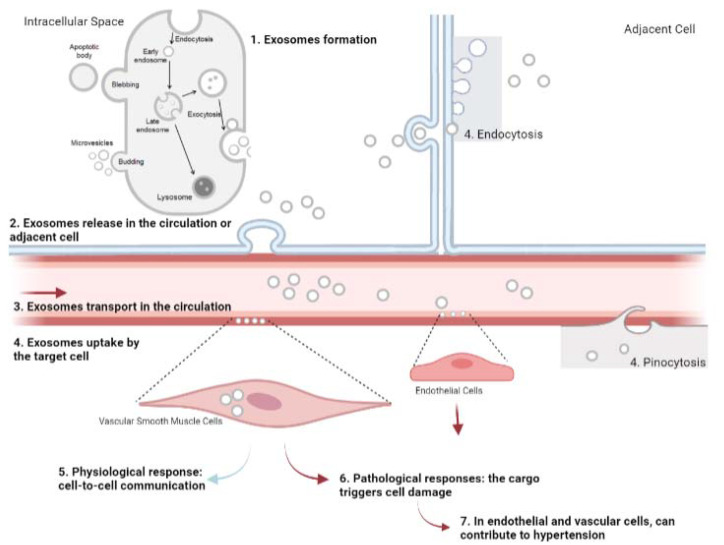Figure 2.
Exosomes mediate intercellular communication, contributing to hypertension. 1. Exosomes are formed by late endosomes in cells, budding into microvesicles; 2. exosomes are released by exocytosis into the circulation or in adjacent cells; 3. once exosomes are in the circulation, their cargo and affinity for the cell membrane will determine which cells are their target; 4. several types of cell, including immune cells, smooth muscle cells, and cancer cells, can uptake exosomes by different mechanisms, such as pinocytosis, phagocytosis, endocytosis, and internalization; 5. physiologically, the cargo of exosomes promotes cell-to-cell communication; 6. however, some contents of exosomes may trigger pathological responses, leading to diseases; 7. ultimately, in endothelial and vascular smooth muscle cells, the release of some miRNAs and other proteins from exosomes can cause endothelial/vascular dysfunction and contribute to the development of hypertension.

